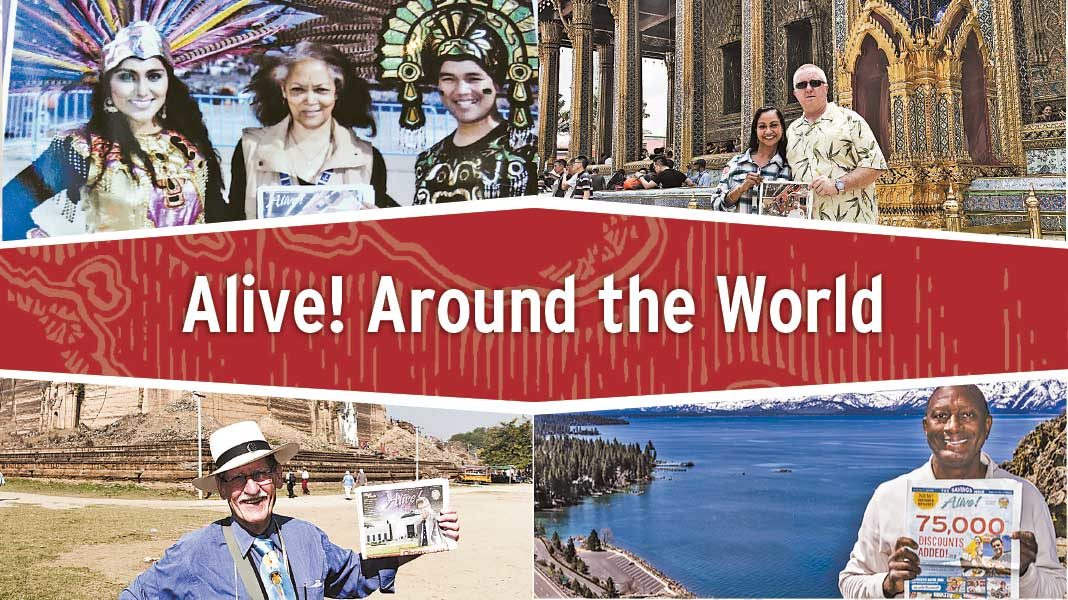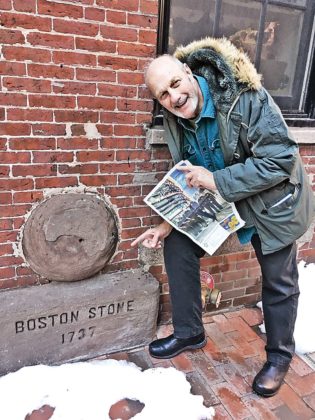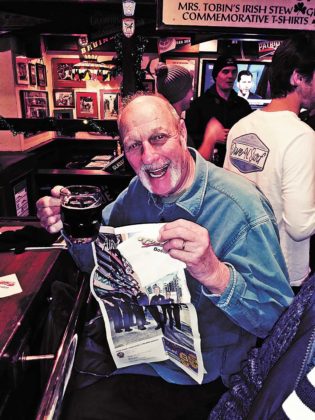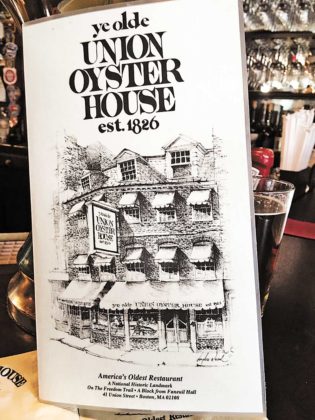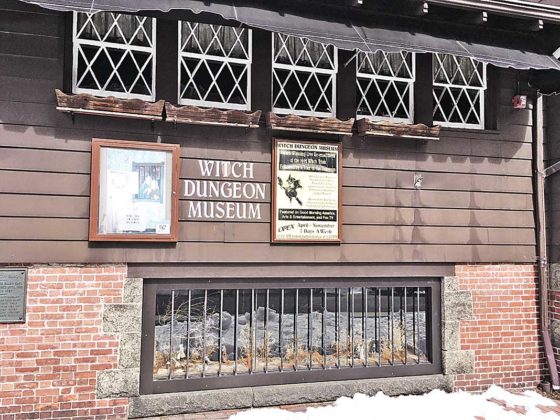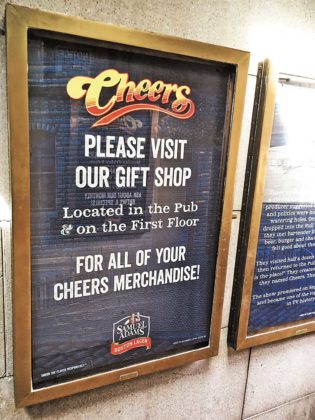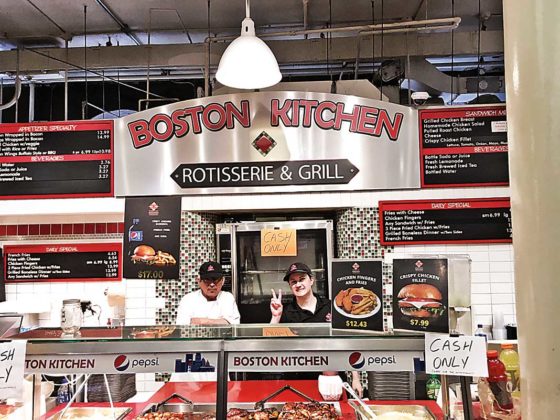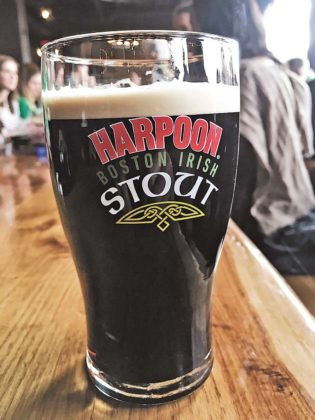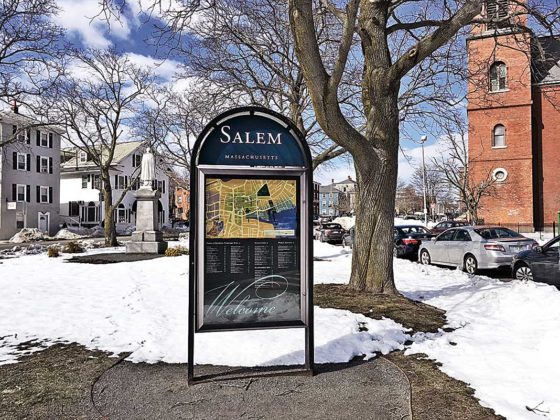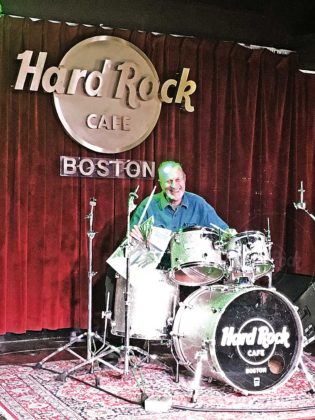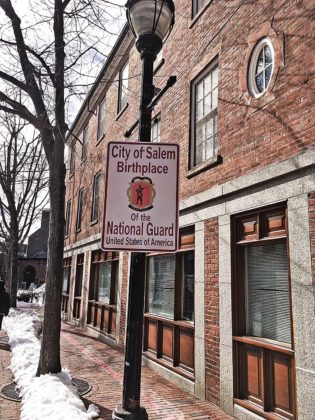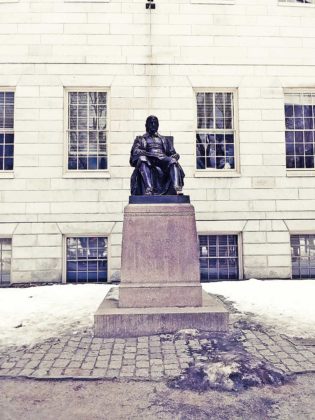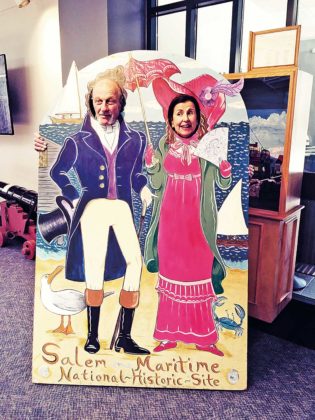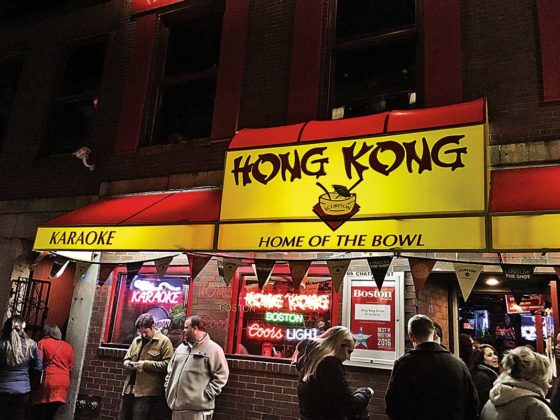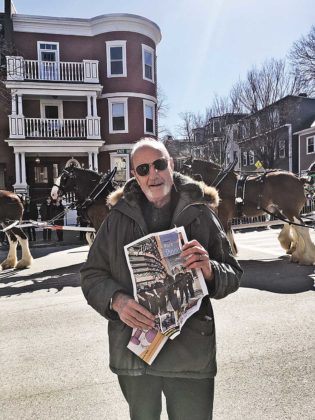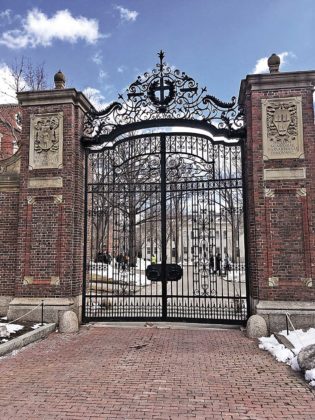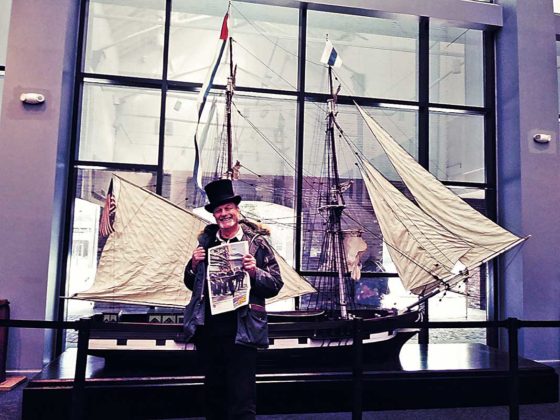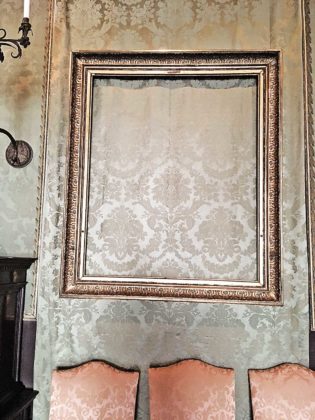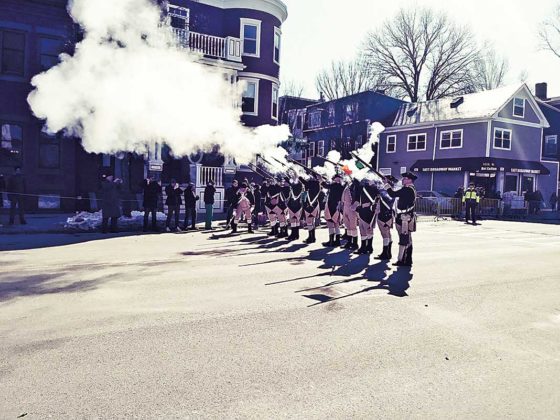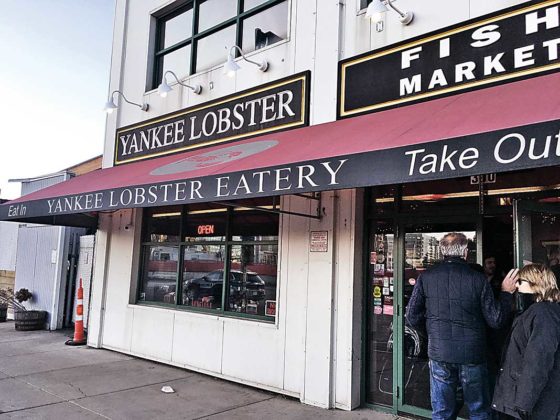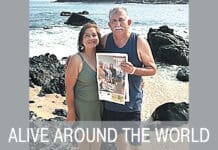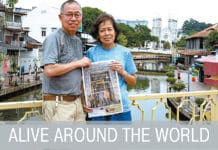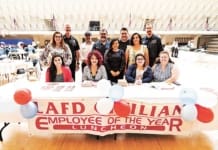 Send in your ALIVE! AROUND THE WORLD
Send in your ALIVE! AROUND THE WORLD
Take Alive! with you wherever you go! Bring your recent copy of Alive! with you when you travel and snap a high resolution photo of you holding Alive! Send in your pictures and text (click on the button to go to the form), and we’ll publish it.
SUBMIT YOUR ALIVE! AROUND THE WORLD
Dublin, Ireland
Here’s Dearbhla McNulty, Club Social Media Manager, on Grafton Street in Dublin on Christmas Eve.
Boston
Club intrepid traveler Capt. II Michael Barnes, Harbor, visited Boston last year for St. Patrick’s Day.
Four Green Days in Boston
After celebrating St. Patrick’s Day in so many places, including Ireland with its small Holy Day Parade of religious relics [Irish St. Patrick’s Day parades are much bigger and more American-style now – Ed.], we thought it was time to visit Boston. We wanted to see if the south side (Southie) world famous parade was as good as they say. So we were surprised when our Boston-Irish friends told us the story of the St. Patrick’s Day celebration.
Apparently, that parade is 100 percent American, originating in Boston commemorating a completely different event, that just happens to fall on an Irish Holy Day. During the colonial rebellion, George Washington lay siege to Boston, but could not capture the city. The Royal British Navy warships were anchored in the harbor, and their cannon fire foiled his every attempt. Washington chose to utilize the earlier success of Benedict Arnold and Ethan Allen’s capture of Fort Ticonderoga by using the forts captured cannons to fire back at the British. Washington selected Boston bookshop owner Henry Knox to bring back all cannons to Boston’s Dorchester Heights, where he could bring them to bear on the British warships in the harbor. It is known today as the noble train of artillery, or Knox’s Expedition. In ten weeks Knox moved 60 tons of powder and cannons 300 miles over the snow-covered countryside. They crossed two semi-frozen rivers using only horse and ox-drawn sleds. It was hard to tell friend from foe. Legend says the password “St. Patrick” was used to identify each other.
On the night of the 16th of March, 1776, under the cover of constant bombing from rebel artillery on Cobble Hill and Lamb’s Dam, Washington had the wagons carrying the heavy cannons muffle their wheels with straw, sneaking by the British outposts and moving to Dorchester Heights. They fooled the British by felling trees, painting them black, and positioning them on the hill disguised as cannons.
On the morning of March 17, the British saw all the cannons bearing down on them from Dorchester Heights to the Harbor. They loaded up their Navy ships with goods, troops and loyal colonials, evacuated the city, and sailed to Halifax, Nova Scotia. After an 11-month siege, Boston was free from British rule, and taxation without representation.
The following year, Washington declared the 17th of March as Evacuation Day, and a yearly celebratory parade was to be held to commemorate the British leaving. This day by coincidence happens to be one of the Christian saint days. Scotland has St. Andrew’s Day, England has St. George’s Day, and Ireland has St. Patrick’s Day. Despite the importance of the victory, Boston didn’t officially recognize Evacuation Day until 1901, when Boston’s mayor declared a public holiday in honor of the sacrifices made by early patriots and Irish Americans. St. Patrick’s Day and Evacuation Day have been celebrated as a dual holiday ever since.
Nonetheless, whatever they want to call the 17th, we were here to have a fun time, starting Thursday morning bright and early right off the Jet Blue redeye flight from Long Beach. Our friends met us at the airport and took us back to their house. We showered, put on lots of warmer clothing and headed off to explore Boston. We took public transport to Boston Common, home of the Puritans’ infamous whipping post and public stocks. There also use to be a great elm tree here, where in days gone by the people of the city would hang “witches” and pirates (unfortunately no longer PC today). This is also where they hung Mary Dyer and three other Quakers for their religious beliefs.
Today all this history is incorporated in a great tourist walk called the Freedom Trail. A blizzard the previous week had rendered much of the common unwalkable, so our hopes of seeing the Edgar Alan Poe statue were slim. We had a hard time distinguishing between statues and piles of snow. We did manage to find the George Washington statue with him sitting astride his horse. Urban legend states that a horse with one leg raised means that the rider was wounded in battle and later died! With this little piece of trivia in our cold heads, we walked off the common, crossed over Beacon Street and headed for TV’s legendary pub “Cheers” (the pub’s real name: Bull and Finch) for some warm adult fortified beverages.
Sometime later, warm and glowing, we headed back to the common, passing more snow-covered statues at the Park Street Church. Arriving at Faneuil Hall we found it closed for repair, so walked around the corner to Quincy Market. We sought refreshment at the Walrus and Carpenter oyster bar, then wandered around all the other assorted food stalls for a look-see. Next, we were off to Hard Rock Café to sample their winter offerings and a quick visit to Ye Olde Union Oyster House.
The Union Oyster House claims to be America’s oldest restaurant, and one-time boarding house to Louis Philippe, the future King of France. Their local Harpoon draft beer selection was excellent. The IPA was not too hoppy and easy to drink. The Irish stout was full bodied, and with the added nitro became soft and creamy. On the lighter side, the house Golden had a dry crisp finish.
Our last point of interest for that day was the aforementioned Dorchester Heights, where a memorial of the siege was built in 1901 of white Georgia marble. Its 115-foot tower is a perfect example of colonial Revival architecture. At its base are a pair of George’s iron cannons pointing toward the city. The small hill on which it stands is quite cold and windy and very close to South Boston’s restaurant row.
Taking advantage of our location, we headed down the hill to a small Italian restaurant called Café Porto Bello. It had been recommended to us, so when the waitress told us that they closed in one hour and we had to be quick and pay with cash, we took a chance. Then the waitress then tripped over her own feet and poured a full jug of water onto the floor next to our table, splashing onto our shoes and clothing. No apology, no towel! We just ate our food, paid up and left. We will not recommend this place.
Friday morning found us on a South Boston bus heading to the North Boston train station to catch the train to Salem. Arriving at North Station early, we noticed what looked like a bar on the platform. Thinking it would be like Los Angeles train stations, bare except for a ticket machine, we were pleased to find that it had a full-service bar. Since it was very cold outside, and early, we ordered coffee with a touch of Jameson to celebrate St. Patrick. By the time the train arrived we were warm, cozy, and ready for an adventure.
Salem is not that far from Boston, and it seemed that we no sooner boarded the train, than we disembarked. Our first walking stop was Gallows Hill. We expected a public execution or two, but it seemed that the cold had stopped all hangings for the day. Slightly disappointed, we moved onto the witch’s dungeon, hoping for a flogging or two, but they were fresh out of witches. Trying to be helpful, we suggested the names of a couple of politicians that we thought could use their services. They thanked us with a sympathetic smile.
Back out into the crisp fresh air, we passed by America’s First Congregational Church. It was founded in 1629 and still going strong. Then we visited yet another museum (Witch’s History) across the road in the Town House Square with a car free pedestrian walkway. The entire walkway and courtyard were paved with red brick, giving it a very cold and sober New England look. It was once home to the East India Marine Hall and the former Salem US Custom House, both part of Salem’s old thriving Far East shipping trade. Now filled in, it has been converted into condos.
Continuing our stroll down the walkway, we passed an interesting array of shops full of potions, candles, stuffed black cats and Tarot card readers. We then arrived at the Armory visitor’s center. It was here in 1626 where Massachusetts’ first militia company, and ten years later in 1636 the American National Guard, were formed. They have lots of information about things to do in the summer and there is even a photo cut out of a couple in period dress where you can take a free souvenir photo.
Directly opposite the information center is the Peabody Essex Museum with more than 1.8 million works of art. It is considered one of the 20 largest art museums in the country, well worth a visit if only to check out their gift shop. Each month they hold a special exhibition. That month they featured the works of artist Georgia O’Keeffe.
After all this culture and exercise it was time for lunch. Salem is a small town, and the Waterfront District with its assorted restaurants and bars was just around the corner. We found the Long Board Marina bar, which looked very low key, friendly and offered a great range of lobster dishes. We ordered a plate of lobster rolls and lobster mac and cheese! Our choice of beverages was two pints of Guinness along with a great local craft beer called Thunder Funk.
The train journey back to Boston was uneventful. Upon arriving in North Station we decided to walk back to South Boston via the Boston tea party museum and the City Tap, a famous gathering spot for the in crowd. Later that evening we took an Uber back into central Boston for dinner near Faneuil Hall and sung karaoke at the Hong Kong Bar. After a couple of Blue Moons and Goose Islands we sounded like professionals, or so we thought. Our motto is, “The more you drink, the better we sound.”
Saturday was going to be our day of comparison, as both my friends and I were educated near Cambridge, England. We wanted to see how America’s seat of advanced learning in Cambridge, Mass., held up to its namesake.
Once again, Boston’s wonderful public transportation system whisked us across the city with apparent ease. Coming from Los Angeles with its unpredictable public transportation and hard-to-make connections, we had assumed that Boston would be the same. We sacrificed breakfast to catch an early train. Now standing outside the cold Red line subway station much earlier than needed, and just a little hungry, we decided to check out the famous Beat Brasserie Cafe. Even at this early hour it was full of students eating and working on their laptops. Once seated we ordered a full Irish breakfast of fried egg, bacon, sausage, mushrooms, black pudding, tomatoes, cottage potatoes and baked beans. Due to it being St. Patrick’s Day it seemed only appropriate to order a holiday pint of Guinness to stabilize all that fat.
Newtowne College was founded in 1636 as “a school or college.” The town changed its name to Cambridge shortly thereafter, and in 1638 when Englishman John Harvard donated his library and half of his very substantial estates to the college the name was changed to Harvard. His statue is the one most visited by tourists on campus, and along with numerous tour groups, we also stopped and took a photo.
The university grounds are worth a visit. The less adventurous can join one of the many walking tours that start from the Red Line station. We just ambled around the college grounds, occasionally eavesdropping on the odd tour group and looking inside the more ornate buildings.
Walking back into Cambridge city center, our cousins from England wanted to visit a Dunkin’ Donut shop, a Massachusetts original. Google pointed us to a small one just around the corner and upon entering the shop, we were surprised to find that the young lady behind the counter spoke very little English. After assorted sign language we discovered that she was from Sudan, and the homeless man sleeping under the counter was there when she came to work that morning. We should have paid more attention to our order, as we had requested four assorted donuts, but instead there were four of the same kind, and stale to boot. Having served in the military, I found their “five-day-old coffee” was still just drinkable.
Our next stop was the Harpoon Beer Hall, specializing in local craft beer. Of course, it was packed with St. Patrick’s Day revelers squeezed onto very long benches. We made lots of new friends, while our wives enjoyed the American-style strong ale called Moose and Rocco. We tried the Boston stout.
After a couple of hours of socializing, we became a little peckish, so we headed off to the Yankee Lobster Fish market across the way. This was one of Boston’s best-kept secrets. The lobsters were alive when you went in. It was not a fancy place but very popular with the locals. We stood in line next to a guy who had come straight from the airport, complete with luggage, to pick up his to go order. If you are ever in Boston, you must pay them a visit.
Sunday’s St. Patrick’s/Evacuation Day Parade, took place in South Boston, home to thousands of Irish immigrants who settled here in the 1800s. It is also the location of the aforementioned Dorchester Heights, the turning point of the siege of Boston and cause of the evacuation of loyalist British troops and personnel to Canada. Unfortunately due to the massive amounts of snow remaining from a blizzard a couple of days before, the parade route had been shortened from 3.2 miles to 1.8. This did not affect us as we were staying near the parade’s end. To the thousands of people trying to view the start of the parade from the Broadway T station, it was another story. They were standing 12 deep!
The parade was not your usual collection of organizations. It was more of a recognition of police, firefighters and trade unions in the city. If anybody were contemplating committing a robbery this would be the perfect day to do it, as just about every police officer and fireman from miles around was in the parade or standing guarding at the barricades. We even bumped into Fire Fighters from Los Angeles and San Diego in full uniform taking part in the parade. There were also a couple of military bands, armored personnel carriers, Coast Guard floats with armed boats, politicians kissing babies, and a historical company of Minutemen intermittently firing their muzzle-loading muskets. Out of the wind it was quite warm as the sun reflected off the piles of snow. We had nonetheless come prepared with sunscreen, water and even a flask of Jameson to keep the cold at bay as we manned the barriers and cheered on the pipe-band and sexy dancers in their transparent thermal tights. Maybe because it was Sunday, or maybe because of past experiences with rowdy revelers and bar brawls, but after the parade ended, all the pubs and bars in Southie were closed.
Monday’s return flight to Long Beach was not until 6:30 p.m., so we decided to visit the Isabella Stewart Gardner Museum in the Fenway-Kenmore neighborhood of Boston. It was built in 1903 in the style of a 15th century Venetian palace for American art collector and philanthropist Isabella Stewart Gardner. On its completion, and in keeping with her eccentricities, she invited all the Who’s Who in Boston to its opening and served them champagne and doughnuts. This was the museum that in 1990 had 13 works of art worth $500 million stolen. The thieves were never caught. The museum really is an amazing building and the longer you stay, the more you will discover, from its sculptures and decorative art, to tapestries and incredible works of art from European, Asian and American artists. There is a beautiful central covered courtyard garden where they often hold various concerts in the summer. In keeping with her enthusiasm for the Boston Red Sox, if you are wearing anything to show support for the team you get a discount on admission, and if your name happens to be Isabella or it’s your birthday your entrance is free.
Boston’s Logan Airport has a great selection of places to eat and drink. I’m not a great fan of chain restaurants, but for something different we had a late lunch at Wolfgang Puck’s. The food was not amazing.
Jet Blue is always a fantastic airline to fly. Our only regret is that Long Beach Airport does not handle international flights.
Regardless of the snow and blustery winds we had a great adventure. Sadly, we did miss our own style of the St. Patrick’s Day crowd back home, partying on the Big Red Bus, drinking beer, wearing silly hats, watching beer promotion girls, and parading around to the tunes of punk rock Irish bands in the sunshine.
Till the next time, keep safe and travel often. Cheers!


